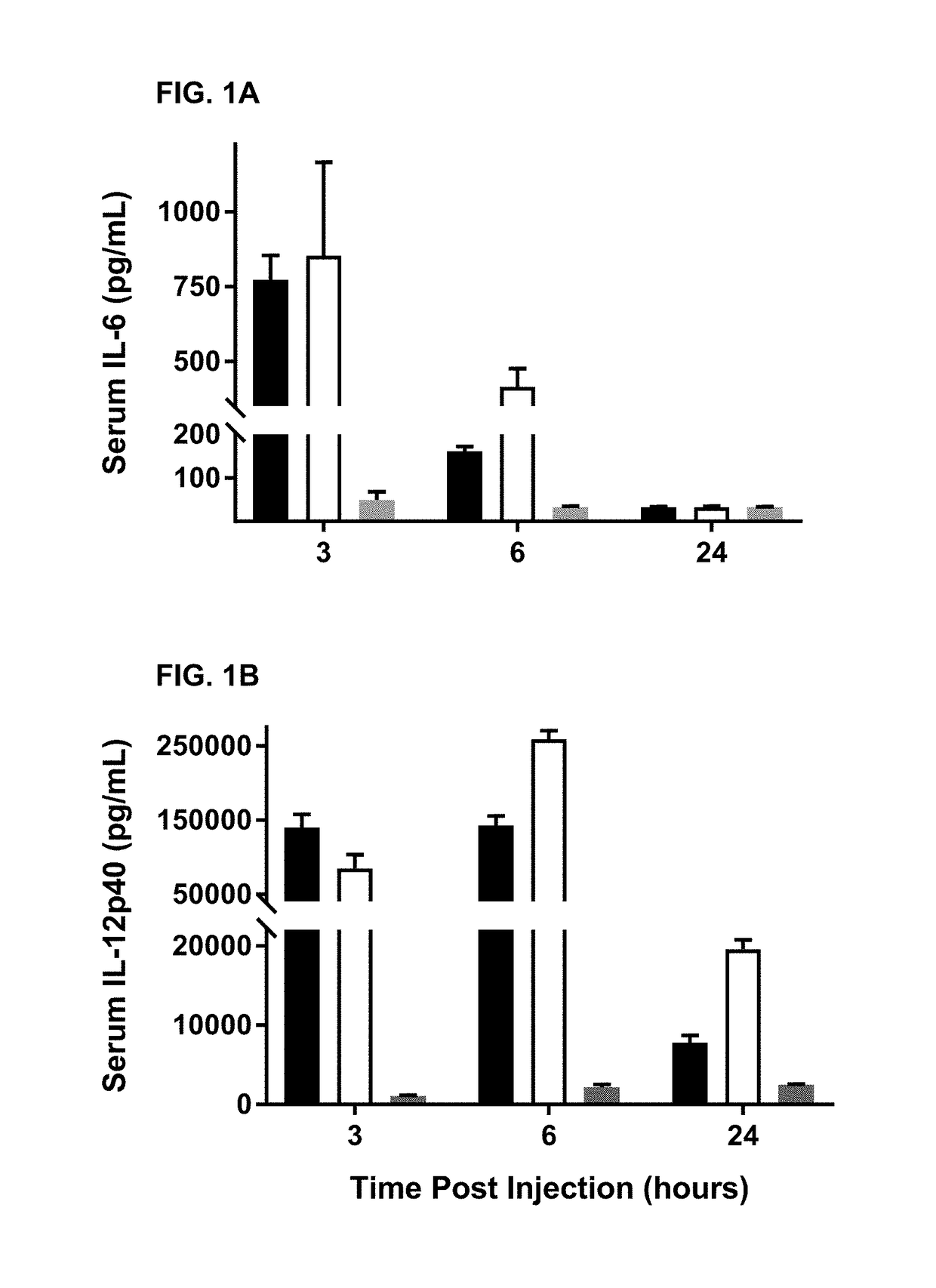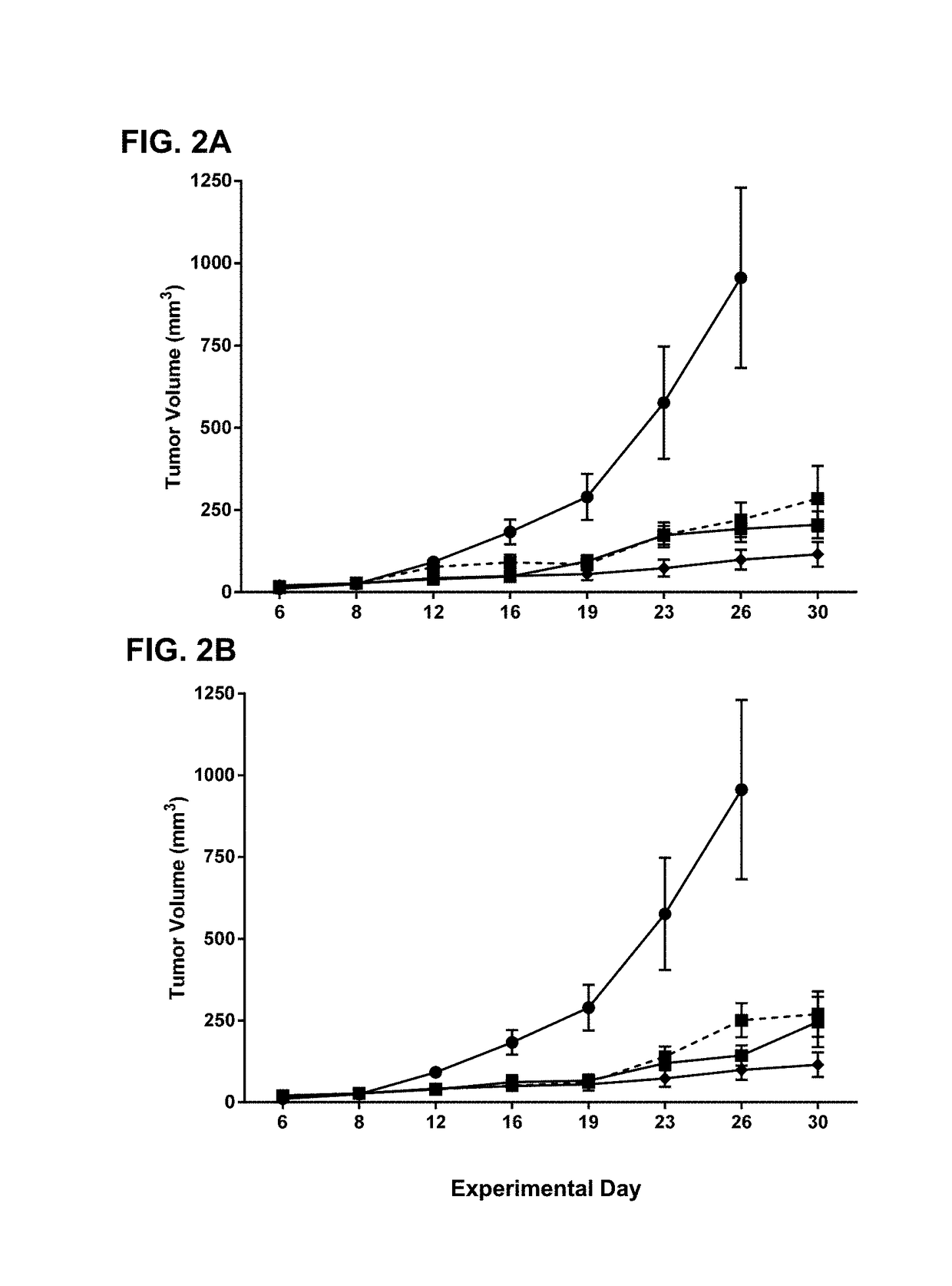Alkyl chain modified imidazoquinoline tlr7/8 agonist compounds and uses thereof
a technology of imidazoquinoline and tlr7/8, which is applied in the field of alkyl chain modified imidazoquinoline tlr7/8 agonist compounds, can solve the problems of limited human therapeutic utility of these compounds, increased serum pro-inflammatory cytokine levels, and significant toxicities in patients
- Summary
- Abstract
- Description
- Claims
- Application Information
AI Technical Summary
Benefits of technology
Problems solved by technology
Method used
Image
Examples
example s1
of N-(4-((4-amino-2-butyl-1H-imidazo[4,5-c]quinolin-1-yl)methyl)benzyl)tetradecanamide (Compound No. 63-10)
[0195]Part A. Nitric acid (125 mL) was added to a slurry of quinoline-2,4-diol (50 g, 0.3 mole) in acetic acid (500 mL), and the reaction mixture was heated to 65° C. for three hours. The mixture was then cooled to 5-10° C. and the solid material collected by filtration, washed with cold water, and air dried. The resulting solid was then recrystallized from methanol and dried under vacuum to yield 58 g of 3-nitro-2,4-quinolinediol as a yellow solid.
[0196]Part B. Phosphorus oxychloride (150 mL) was added to 3-nitro-2,4-quinolinediol (58 g) under an argon atmosphere and heated to 95° C. for 4 hours. The mixture was then cooled to room temperature and poured onto crushed ice with constant stirring. The precipitated product was collected by filtration, washed with water, and dried under vacuum. The crude solid was purified by flash chromatography over silica gel using hexane / ethyl ...
example s2
of 2-butyl-1-(4-((pentylamino)methyl)benzyl)-1H-imidazo[4,5-c]quinolin-4-amine (Compound No. 63-17)
[0204]Parts A-H were the same as in Example S1.
[0205]Part I. Valeric acid (34 mg, 0.33 mmol, 1.2 eq) and trimethylamine (140 mg, 1.39 mmol, 5.0 eq) were added to a solution of 1-(4-(aminomethyl)benzyl)-2-butyl-1H-imidazo[4,5-c]quinolin-4-amine (100 mg, 0.28 mmol, 1.0 eq) in anhydrous dimethylformamide (2 mL), and the slurry was mixed for 5 minutes followed by the addition of HBTU (131 mg, 0.34 mmol, 1.25 eq). This reaction mixture was further stirred for 2 hours under an argon atmosphere. The reaction was diluted with ethyl acetate (100 mL) and washed with water (3×30 mL), then dried using magnesium sulfate and concentrated under vacuum. The crude residue was taken up in ethyl acetate and methanol and purified using column chromatography (6% methanol / dichloromethane) to yield 160 mg of N-(4-((4-amino-2-butyl-1H-imidazo[4,5-c]quinolin-1-yl)methyl)benzyl)pentanamide.
[0206]Part J. A solut...
example s3
of 2-butyl-1-(4-(((2-cyclopropylethyl)amino)methyl)benzyl)-1H-imidazo[4,5-c]quinolin-4-amine (Compound No. 63-33)
[0207]Parts A-H were the same as in Example S1.
[0208]Part I. Cyclopropylacetic acid (33 mg, 0.33 mmol, 1.2 eq) and trimethylamine (140 mg, 1.39 mmol, 5.0 eq) were added to a solution of 1-(4-(aminomethyl)benzyl)-2-butyl-1H-imidazo[4,5-c]quinolin-4-amine (100 mg, 0.28 mmol, 1.0 eq) in anhydrous dimethylformamide (2 mL), and the slurry was mixed for 5 minutes followed by the addition of HBTU (131 mg, 0.34 mmol, 1.25 eq). This reaction mixture was further stirred for 2 hours under an argon atmosphere. The reaction was diluted with ethyl acetate (100 mL) and washed with water (3×30 mL), then dried using magnesium sulfate and concentrated under vacuum. The crude residue was taken up in ethyl acetate and methanol, and purified using column chromatography (6% methanol / dichloromethane) to yield 140 mg of N-(4-((4-amino-2-butyl-1H-imidazo[4,5-c]quinolin-1-yl)methyl)benzyl)-2-cyclo...
PUM
| Property | Measurement | Unit |
|---|---|---|
| temperatures | aaaaa | aaaaa |
| mean diameter | aaaaa | aaaaa |
| diameter | aaaaa | aaaaa |
Abstract
Description
Claims
Application Information
 Login to View More
Login to View More - R&D
- Intellectual Property
- Life Sciences
- Materials
- Tech Scout
- Unparalleled Data Quality
- Higher Quality Content
- 60% Fewer Hallucinations
Browse by: Latest US Patents, China's latest patents, Technical Efficacy Thesaurus, Application Domain, Technology Topic, Popular Technical Reports.
© 2025 PatSnap. All rights reserved.Legal|Privacy policy|Modern Slavery Act Transparency Statement|Sitemap|About US| Contact US: help@patsnap.com



